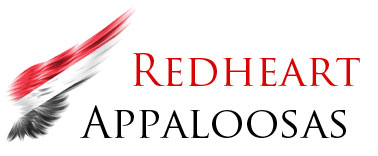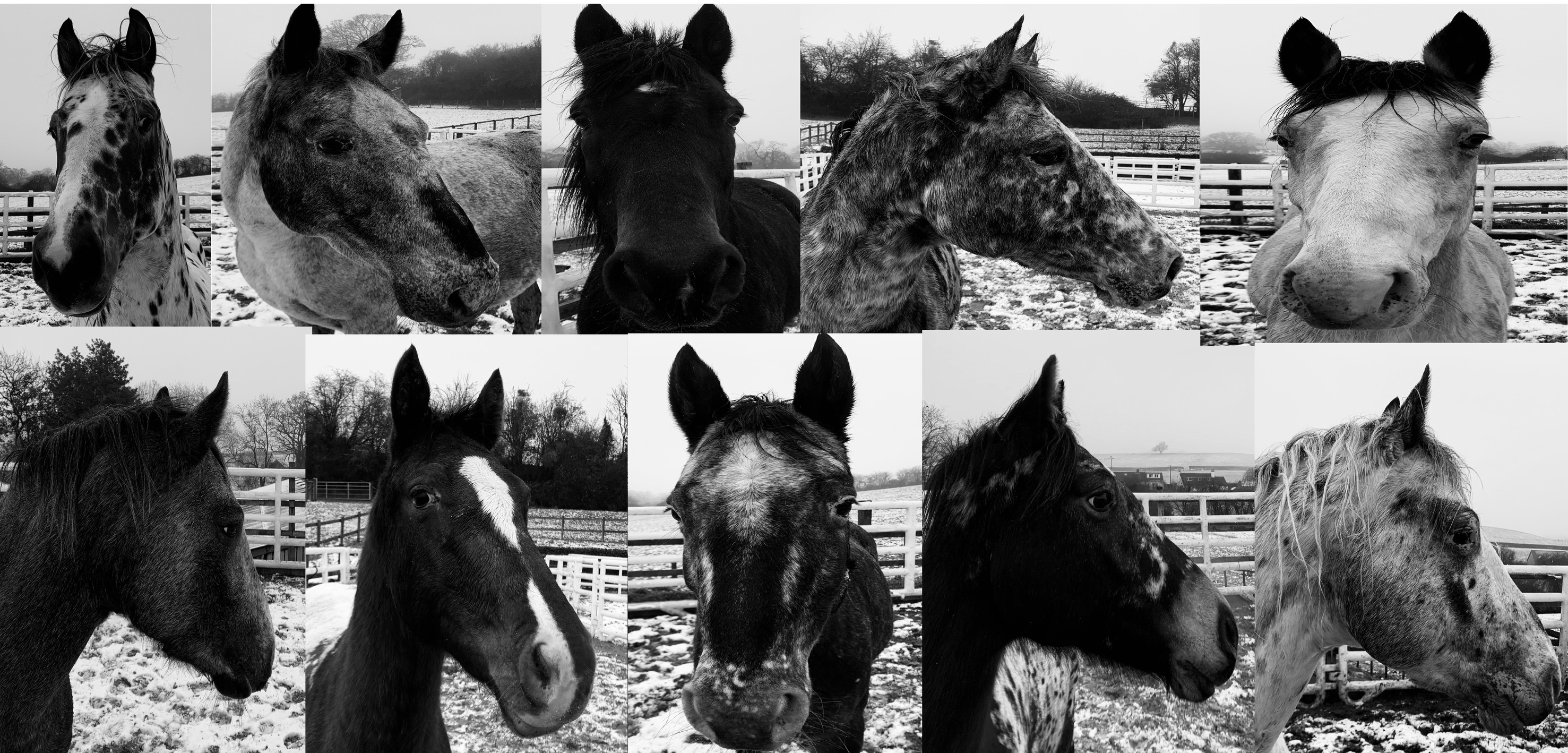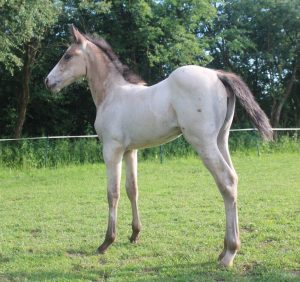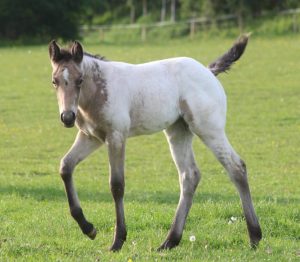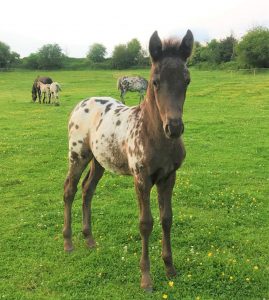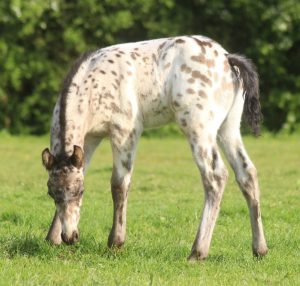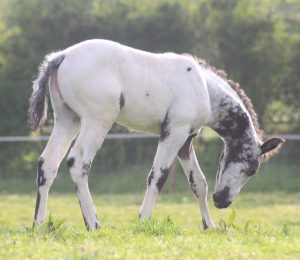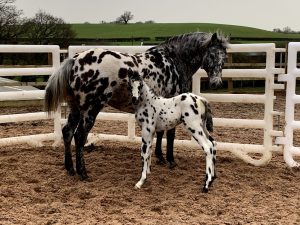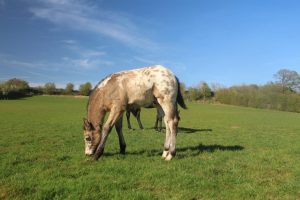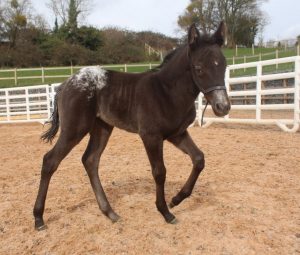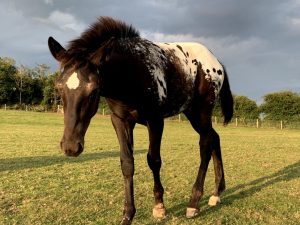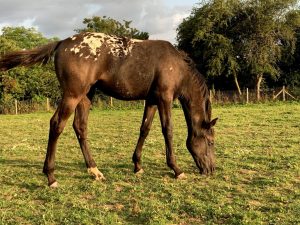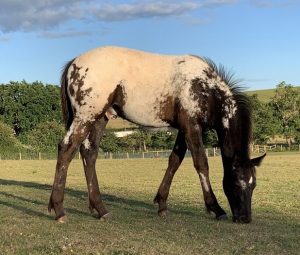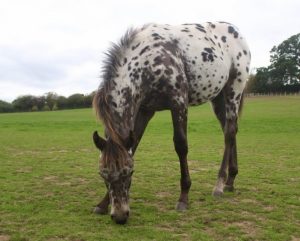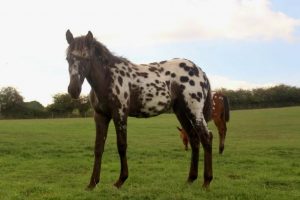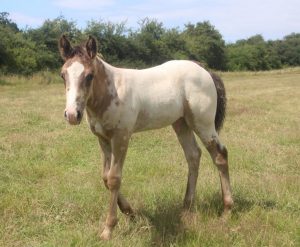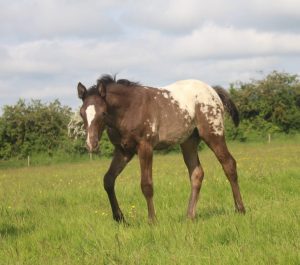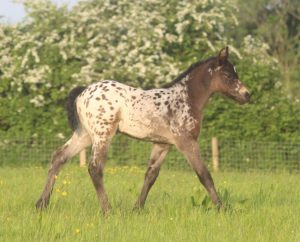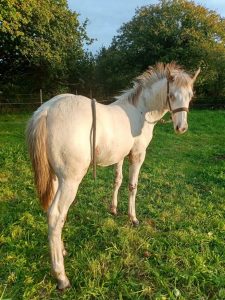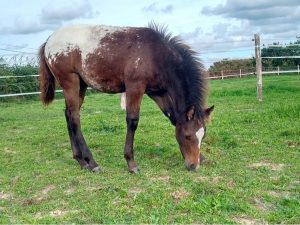Foundation Appaloosa Semen Available 2024 (LP/LP PATN1/PATN1) – ALL MARES
/0 Comments/in APPALOOSA, Appaloosa Horse Club, Appaloosa Horse Club UK, Appaloosa Young Stock, British Appaloosa Society, DFR Patahas Redheart, Foreign Breeds, Foundation Appaloosa Horse Registry, Foundation Appaloosa Stallion, Redheart Rain Dancer, Redheart Raphaele, Redheart Raven, Redheart Reflection, Redheart Relentless, Redheart Remembrance, Redheart Result, Redheart Revelation, Redheart River Run, Redheart Rookie, Redheart RU Chubarry, Redheart Rumours /by Paula CooperMERRY CHRISTMAS
For 2024 ONLY, we will be offering our Stallion, DFR Patahas Redheart (Blu) frozen semen to ALL mares in the UK & Europe.
Blu is a 15.2h, smoky black (EE aa CRcr) Foundation Appaloosa, homozygous for the Leopard Complex gene (LP/LP) and the Pattern gene (PATN1/PATN1).
Certified negative for Polysaccharide Storage Myopathy (PSSM1), Hereditary Equine Regional Dermal Asthenia (HERDA), Glycogen Branching Enzyme Deficiency (GBED), Equine Hyperkalemic Periodic Paralysis Disease (HYPP), Malignant Hyperthermia (MH), Grey gene and Squamous Cell Carcinoma (SCC).
A very kind stallion who we have brought on very slowly, he’s successfully competed in the ring (in hand & under saddle) and was lightly introduced to show jumping earlier this year.
He has contributed his share of the genes to some awesome Appaloosa foals here in the UK & Europe.
His details are HERE.
Please email us for a contract and a copy of his Semen Assessment if you are interested – HERE.
ALL mares must be certified 5 panel negative, NO grey mares, NO LP/LP mares and NO inbreeding or linebreeding (see pedigree).
ALL mares will be included on his Stallion Report 2024 with ApHC UK, BApS & ApHC as standard.
Payment of £500 must be received (1 dose (6 straws)) before semen will be released from Stallion AI.
Limited to the first 20 doses being ordered.
A reminder of the quality Blu has produced:
Redheart Mares – Counting down the foaling days 2022
/0 Comments/in Appaloosa Horse Club, Appaloosa Horse Club UK, Appaloosa Young Stock, British Appaloosa Society, Caricks Redheart, DFR Patahas Redheart, For Sale, Foundation Appaloosa Horse Registry, Foundation Appaloosa Mare, Foundation Appaloosa Stallion, Hevans EV Catorrius, Peyres Catori Cat, Princesse Pascale, Redheart Pascalius, Taslisman's Redheart, The Stud /by Paula CooperThe 5 Redheart broodmares are looking great, feeling fine and totally relaxed in their routine as we start to count down the days to foaling and pray for the safe arrival of our 2022 foals.
We are expecting two foals from Reus and three foals from Blu, all have full siblings except Reus x Ghost, this will be our first ever Foundation Appaloosa Horse Registry (FAHR) foal from our Catori line. It goes without saying, all we want is a healthy new-born but we would be blessed to see a filly delivered. A filly would be retained for our future breeding plan with Fire or Blu, continuing our path of the UK’s Foundation Appaloosa Stud.
Counting down the foaling days 2022
The Class of 2021 – The Window of opportunity…
/0 Comments/in APPALOOSA, Appaloosa Horse Club, Appaloosa Horse Club UK, Appaloosa Young Stock, British Appaloosa Society, Caricks Redheart, DFR Patahas Redheart, For Sale, Foreign Breeds, Foundation Appaloosa Horse Registry, Foundation Appaloosa Mare, Foundation Appaloosa Stallion, Peyres Catori Cat, Princesse Pascale, Redheart Pascalius, Taslisman's Redheart, The Stud /by Paula Cooper
The Class of 2021 – The First Blade of Grass…
/0 Comments/in Appaloosa Horse Club, Appaloosa Horse Club UK, Appaloosa Young Stock, British Appaloosa Society, DFR Patahas Redheart, For Sale, Foreign Breeds, Foundation Appaloosa Mare, Foundation Appaloosa Stallion, The Stud /by Paula Cooper
The Class of 2021 – The First Turn-out
/0 Comments/in Appaloosa Horse Club, Appaloosa Horse Club UK, Appaloosa Young Stock, British Appaloosa Society, DFR Patahas Redheart, For Sale, Foreign Breeds, Foundation Appaloosa Horse Registry, Foundation Appaloosa Mare, Foundation Appaloosa Stallion, Organisations, Redheart Sponsorship, The Stud /by Paula CooperIn conjunction with Farm & Stable Supplies for supporting the Appaloosa Horse Club (ApHC) UK 2021 Photo Competition. Thank you 🙂
There is no doubt turnout is best for new-born foals, enabling them to develop physically and mentally. All our mare’s and foals have individual turnout in the safety area of the duracorral before they are turned out in the field together.
Here are the first few days of their lives outside the barn…
The Class 2021 – THE FIRST 48 HOURS
/0 Comments/in APPALOOSA, Appaloosa Horse Club, Appaloosa Horse Club UK, Appaloosa Young Stock, British Appaloosa Society, Caricks Redheart, DFR Patahas Redheart, For Sale, Foreign Breeds, Foundation Appaloosa Mare, Foundation Appaloosa Stallion, Peyres Catori Cat, Princesse Pascale, Redheart Pascalius, Taslisman's Redheart, The Stud /by Paula CooperIn conjunction with Farm & Stable Supplies for supporting the Appaloosa Horse Club (ApHC) UK 2021 Photo Competition. Thank you 🙂
Can you imagine being born within 4 walls and then the door is opened, a new environment awaits you but also the realisation of what your legs are for…
Our post foaling check list is quite extensive, but only then can we relax and enjoy our foals knowing we have done our best to ensure their well-being.
Here are some clips from The Class of 2021, showing their characters within in the first 48hrs of life outside the stable.
The Class of 2021 – STAGE 3 – Passing The Placenta
/0 Comments/in APPALOOSA, Appaloosa Horse Club, Appaloosa Horse Club UK, Appaloosa Young Stock, British Appaloosa Society, Caricks Redheart, DFR Patahas Redheart, For Sale, Foreign Breeds, Foundation Appaloosa Horse Registry, Foundation Appaloosa Mare, Foundation Appaloosa Stallion, Peyres Catori Cat, Princesse Pascale, Redheart Pascalius, Taslisman's Redheart, The Stud /by Paula CooperIn conjunction with Farm & Stable Supplies for supporting the Appaloosa Horse Club (ApHC) UK 2021 Photo Competition. Thank you 🙂
STAGE 3 of foaling is known as delivery of the placenta. The mare’s uterus continues to contract after foaling which causes the placenta to be expelled BUT so much more happens before the placenta is expelled.
So, the foals are safely out, either our mares get up or our foals crawl to their dam’s head but either way the umbilical cord breaks and the foals begin their first mission, to get to their feet. Their second mission is to find the milk bar, both missions are challenging, we only intervene if required to do so.
Our mares’ bond with their foals by licking, nuzzling, and nickering to them, it is wonderful to watch.
During the processes of the foals’ natural instincts, to stand and feed, the mare’s body is constantly experiencing the pain of contractions, the ultimate result we wait for is a placenta that is completely intact.
Once we are satisfied the foal has properly latched on and nursed, the foal has urinated and passed the meconium and most of all the placenta is intact, only then do we leave them, knowing we have done everything possible to ensure a great start to their new life.
The Class 2021 – STAGE 2 FOALING
/0 Comments/in APPALOOSA, Appaloosa Horse Club, Appaloosa Horse Club UK, Appaloosa Young Stock, British Appaloosa Society, Caricks Redheart, DFR Patahas Redheart, For Sale, Foreign Breeds, Foundation Appaloosa Horse Registry, Foundation Appaloosa Mare, Foundation Appaloosa Stallion, Peyres Catori Cat, Princesse Pascale, Redheart Pascalius, Taslisman's Redheart, The Stud /by Paula CooperIn conjunction with Farm & Stable Supplies for supporting the Appaloosa Horse Club (ApHC) UK 2021 Photo Competition. Thank you 🙂
As the contraction persist, we witness the bulge of the white fluid-filled amniotic sac from the vulva followed by every breeder’s delight, two front feet and a nose. We wait and watch and talk to our mares, we know our mares well and they need to know I am there.
As the contraction persist, the feet and nose pop in and out of their vulvas, it is common for a mare to get up and back down as she repositions her foal for ease of delivery. The head and front feet are now out… Then, a few hard pushes that result in the shoulders passing through the birth canal and eventually the foal is out!
Telling them how well they have done and keeping everything calm, they whinny and look at their new-born and stay lying down which is beneficial for the foal to receive as much blood as possible to pass through the umbilical cord.
Right or wrong, we always pull out the back feet out, we know too many stories of foals trying to crawl whilst the feet are inside the mare whilst she is led down, the result can be detrimental to the mare, so we take no risks.
Whilst the foal is out, we gently clear the nasal passage of any fluid, imprint them before the mares get up or the foal crawl to the mares head and allow the bonding process to begin.
Either the mare will stay down, and the foal will start to crawl towards her, or the mare will get up and their first meet is just beautiful. This is their first bond, all our mares are great mothers, they are kind and do their foals well, we leave them bond.
Interesting Links
- Amy Griffiths Photography
- Animal Genetics UK
- Animal Genetics USA
- University of California Davis
- Alison James Photography
- Mountain Media
- AG Horse Transport (Adam Gibson Equine Horse Transport)
- Simon Coates Photography
- Three Counties Equine Hospital
- American Appaloosa Association
- Equi-BlingUK
- Top Shots Photography
- The Appaloosa Museum
- The British Appaloosa Society (BApS)
- All Breed Database
- Real Time Imaging
- Appaloosa Horse Club UK (ApHC UK)
- Etalon Diagnostics
- Sundance 500 International
- IJ Equine Photography
- LG Media & Marketing
- Western Equestrian Society (WES)
- Foundation Appaloosa Horse Registry (FAHR)
- Redheart Appaloosa Semen Sales Facebook Page
- The Appaloosa Project
- NAK Sports Images
- International Colored Appaloosa Association, Inc
- Redheart Appaloosa Facebook Page
Pages
- About
- Contact
- Home
- Mares
- Merchandise
- News
- Paula Cooper
- SALES
- Redheart Rain Dancer
- Redheart Raphaele
- Redheart Raven
- Redheart Realisation
- Redheart Reality
- Redheart Recognition
- Redheart Reflection
- Redheart Regal
- Redheart Regardless
- Redheart Regent
- Redheart Relentless
- Redheart Remembrance
- Redheart Replication
- Redheart Revelation
- Redheart Ricochet
- Redheart River Run
- Redheart Romance
- Redheart Rookie
- Stallions
- Why Redheart?
Latest News
- What a fabulous start to 2025 January 9, 2025
- Happy New Year 2025 January 1, 2025
- Bottoms Up @ New Year – 2024 December 31, 2023
- Foundation Appaloosa Semen Available 2024 (LP/LP PATN1/PATN1) – ALL MARES December 17, 2023
- The Redheart Stallions Receive Appaloosa Horse Club UK (ApHC UK) Accomplishments December 24, 2022
